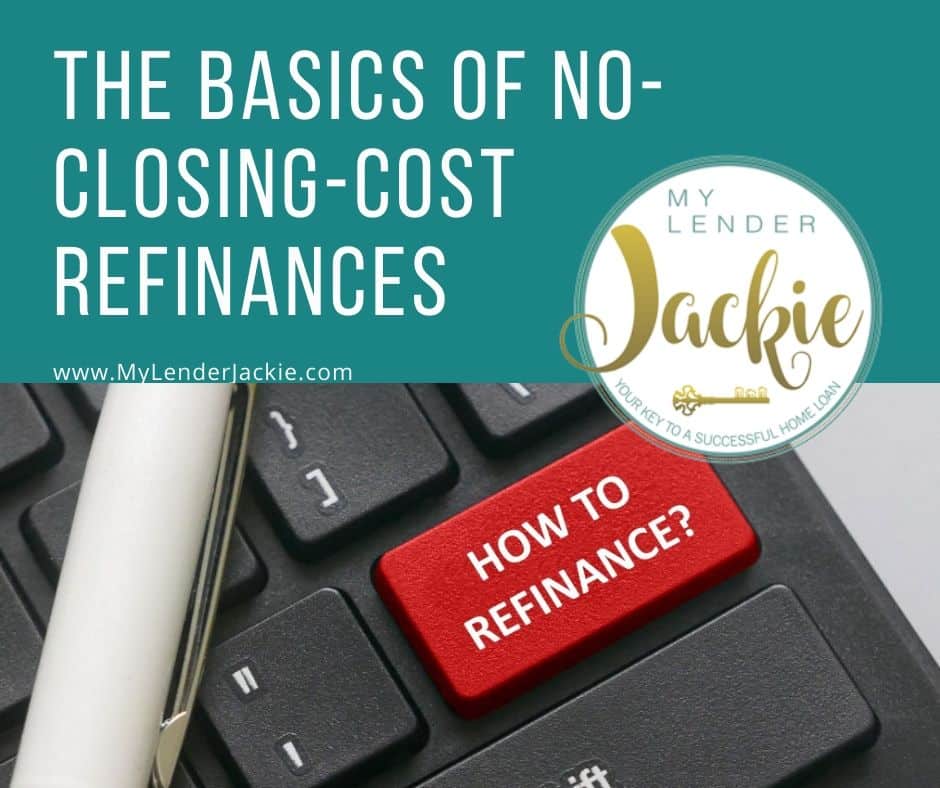Right now a large number of home owners are hoping to take advantage of historically low interest rates and refinance so they can lower their monthly mortgage payment. Is a no-closing-cost loan refinance a better way to go?
The Details of a No-Closing- Cost Mortgage Refinance
In a traditional refinance, the borrower brings a check to the closing in order to pay for the closing costs of a loan. Closing costs can include the appraisal fee, title search, title insurance, and application fees.
In a no-closing-cost refinance you don’t have to pay these costs when you are signing the closing documents of the loan. The closing costs are added into the amount you are borrowing. So, in simple terms, you are borrowing the money for closing costs from the bank in addition to the amount you still owe on your home. It is not uncommon for borrowers to pay a higher interest rate over the life of the loan if they go for this option.
The Details of Closing Costs
Closing costs in a nutshell are all of the costs associated with getting the loan put together and approved. Most commonly this adds up to between 2 and 5 percent of the total amount borrowed. Beyond a bank’s application fee most common closing costs include:
Appraisal Fee- Many times a bank will require an appraisal on the property in order for loan approval. The appraisal fee is the cost charged by the appraiser to come and look at the house and appraise the home. This is commonly between $300 and $450.
Credit Check- It costs money to obtain a full detailed credit report so the bank can examine your credit history. This can be a cost of about $25 per person that will be named on the loan.
Origination Fee- Some lenders will charge a fee to begin a new loan and this can cost around $125.
Title Search- In all loans other than the first time purchase of brand new construction, a bank will do a title search to determine the home does not have issues with rightful property ownership or liens on the home. It can cost about $450.
Closing costs can vary from state to state and even bank to bank.
Is a No-Closing-Cost Loan Right for You?
With any refinance, it is good to look at your long-term living plans as well as your current financial situation.
If you plan to live in the same home for less than five years from today, a no-closing-cost refinance might actually be the best option to cut your mortgage costs. It generally takes about five years to get to a break-even point where you are no longer recouping the closing costs on a typical refinance. So if you opt for a no-closing-cost loan you only end up paying the higher interest rate for just a few years and it could end up being a cheaper amount than paying the closing costs all at once.
This type of refinancing might not be the best choice if you are planning to stay in your home for the life of the loan because you will end up paying the closing costs as well as all of the additional interest. This higher interest rate is going to cost significantly more money. You could even end up paying two or three times the closing cost amount.
Alternative Ways to Save on Closing Costs
There are a couple of fees you can ask to have waived. The most standard one to ask about waving is the appraisal fee. This can save you a significant amount of money. Some lenders will waive this fee if you are a strong low-risk borrower with significant equity. Some may wave this fee just because the distancing measures have made items like appraisals more difficult.
Another fee you can ask about waiving is the application fee. Some banks will wave this for borrowers who are already customers as a way of saying thank you for your business.
Are you hoping to refinance in California? I am here to help with all of your home loan questions and needs. I can help find the best California loan product specifically for you.


